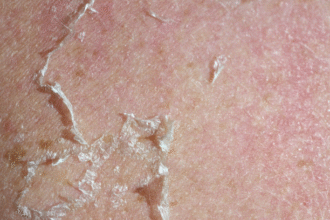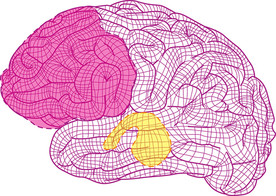Breast Cancer Clinical Recognition
Introduction
Breast cancer is the most commonly diagnosed malignancy in women and a leading cause of cancer death worldwide. While in situ disease (DCIS) is non‑invasive, invasive carcinomas can spread via lymphatic and hematogenous routes to regional nodes and distant organs. Early recognition of symptoms, appropriate imaging, tissue diagnosis, and subtype‑driven therapy are central to optimal outcomes.
Key Signs and Symptoms
- Palpable mass: Usually solitary, firm/hard, irregular, poorly mobile; often painless.
- Nipple discharge: Concerning when spontaneous, unilateral, and bloody/serosanguinous.
- Skin changes: Dimpling (“peau d’orange”), tethering, erythema; inflammatory breast cancer presents with rapid swelling, warmth, and diffuse erythema.
- Nipple–areolar changes: Retraction/inversion, eczematous changes suggest Paget disease of the nipple.
- Axillary/supraclavicular lymphadenopathy: Hard, matted nodes suggest metastasis.
Nipple Discharge Pearls
| Pattern | Common causes | Next steps |
|—|—|—|
| Bilateral, milky | Hyperprolactinemia, medications | Prolactin, TSH; review meds |
| Unilateral, bloody/serous | Intraductal papilloma, carcinoma | Diagnostic mammogram + targeted US; ductal evaluation; core biopsy |
| Green/brown, multiple ducts | Duct ectasia | Reassure if imaging benign; treat symptoms |
Clinical Examination
- Inspect both breasts sitting and supine; look for asymmetry, contour deformity, skin/nipple changes.
- Palpate all quadrants and tail of Spence with systematic technique; include axillary, supraclavicular, and infraclavicular nodes.
- Document size, location (clockface and distance from nipple), consistency, mobility, and overlying skin changes.
Diagnostic Pathway (Triple Assessment)
- Clinical assessment (history and exam)
- Imaging
- Pathology
Imaging
- Mammography: First‑line for women ≥40 or when calcifications suspected; BI‑RADS guides management.
- Ultrasound: First‑line in women <30, pregnant/lactating, and to characterize masses seen on mammography; improves evaluation in dense breasts.
- MRI: For high‑risk screening, problem‑solving in discordant cases, extent of disease mapping, and response assessment during neoadjuvant therapy.
Tissue Diagnosis
- Core needle biopsy is preferred for solid masses and suspicious calcifications (vacuum‑assisted when needed).
- Pathology workup must include ER, PR, and HER2; Ki‑67 assists in proliferation assessment.
- Consider multigene assays (e.g., Oncotype DX) in selected ER+ early‑stage cases to guide chemotherapy benefit.
Staging and Initial Workup
- AJCC TNM staging incorporates tumor size (T), nodal status (N), and metastases (M), as well as biologic factors (ER/PR/HER2, grade).
- Baseline labs as indicated; systemic staging imaging (CT, bone scan, PET/CT) for symptomatic patients or those with stage III, high‑risk, or lab abnormalities.
Management Principles (Multidisciplinary)
Surgery
- Breast‑conserving surgery (lumpectomy) with negative margins plus whole‑breast radiation for eligible patients.
- Mastectomy (simple/skin‑/nipple‑sparing) when not BCS‑eligible or by preference; consider immediate reconstruction.
- Axillary staging with sentinel lymph node biopsy (SLNB); completion axillary dissection reserved for selected node‑positive scenarios.
Radiation Therapy
- Adjuvant after BCS; post‑mastectomy radiation for T3/T4 tumors or ≥4 positive nodes; consider for 1–3 nodes with other high‑risk features.
Systemic Therapy (subtype‑driven)
- ER+/HER2–: Endocrine therapy (tamoxifen or aromatase inhibitor); ovarian suppression in premenopausal high‑risk. Add CDK4/6 inhibitors in selected settings.
- HER2+: Anti‑HER2 therapy (trastuzumab ± pertuzumab); consider antibody‑drug conjugates in residual disease.
- Triple‑negative (TNBC): Cytotoxic chemotherapy; immunotherapy for PD‑L1+ advanced disease; PARP inhibitors for germline BRCA mutations.
- Neoadjuvant therapy is favored for larger tumors, node‑positive disease, and most HER2+ or TNBC to downstage and assess pathologic response.
Special Situations
- Paget disease of the nipple: Evaluate with imaging and biopsy; management mirrors underlying DCIS/invasive disease.
- Inflammatory breast cancer: Treat as clinical stage III—neoadjuvant chemo ± anti‑HER2, then mastectomy and radiation.
- Male breast cancer: Similar principles; higher likelihood of ER+ disease.
Follow‑up and Survivorship
- Surveillance: History/physical every 3–6 months for 3 years, every 6–12 months for years 4–5, then annually; annual mammography for conserved breast.
- Manage late effects: Lymphedema, cardiotoxicity (anthracyclines/HER2 therapy), bone health (with AIs), menopausal symptoms, psychosocial care.
- Risk reduction: Maintain healthy BMI, regular exercise, limit alcohol, and consider risk‑reducing medications for high‑risk ER+ patients.
Red Flags Requiring Urgent Referral
- Rapidly enlarging, painful, erythematous breast (rule out inflammatory breast cancer)
- Hard, fixed axillary node(s) with or without breast lesion
- Spontaneous unilateral bloody nipple discharge
Key Takeaways
- Triple assessment—exam, imaging, biopsy—underpins diagnosis.
- ER/PR/HER2 status and grade drive systemic therapy decisions.
- Early referral to a multidisciplinary team improves outcomes.







